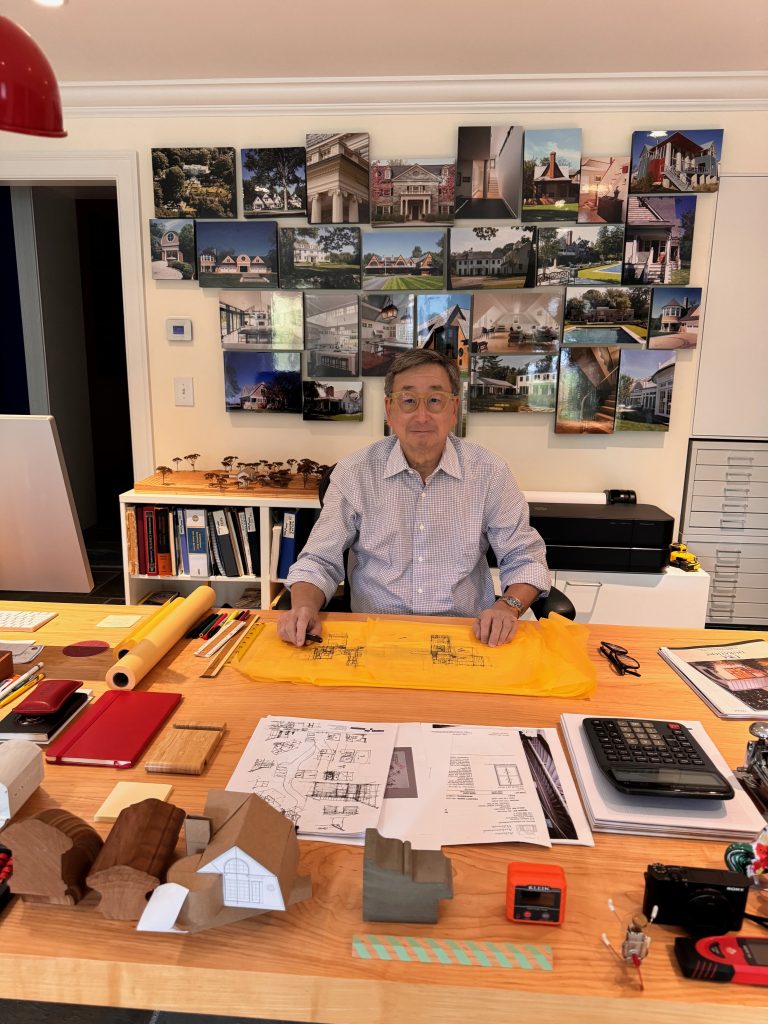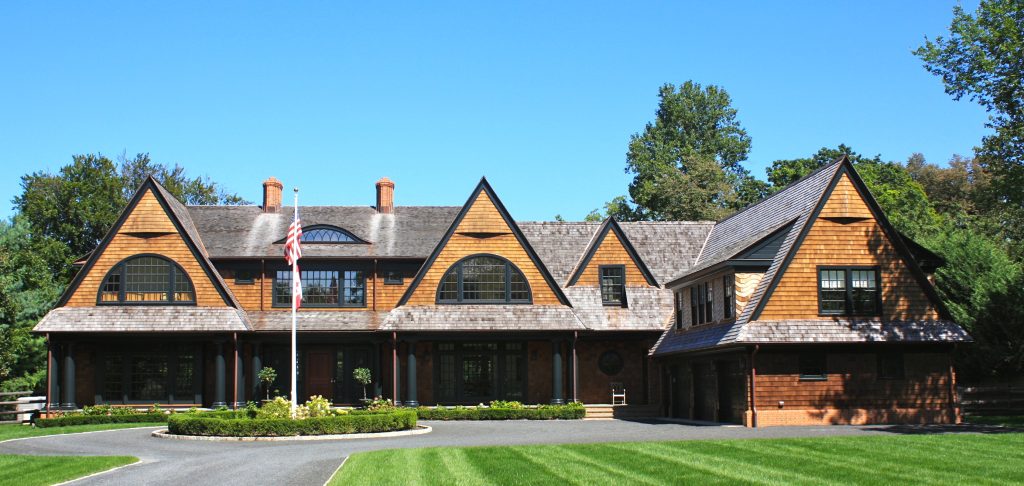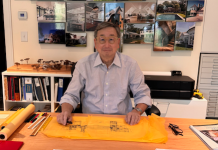
By Stephen Appezzato
MIDDLETOWN – Local architect Michael S. Wu has been named to Forbes’ list of America’s Top 200 Residential Architects for 2025. Based in the Locust area of Middletown, Wu has dedicated 41 years to designing single-family homes and his work has been commissioned across North America, including in New Jersey, New York, Connecticut, Massachusetts, California, South Carolina and Nova Scotia.
The Forbes list, known for its selectivity and high standards, identifies architects whose firms stand out for their exceptional quality and innovation – and getting on it is no easy feat.
“It’s a crazy thought,” Wu said. “They look at 18,000 AIA (American Institute of Architects) member websites who do principally residential architecture. In 18,000 architecture firms there is an abundance of talent, and it’s hard for me to believe that my small little office (which) is really just me working out of my home and two people online, would be in the top 2% of the country,” Wu remarked.
Out of the 18,000, approximately 750 firms were invited to advance in the process. Each submitted three projects completed since 2019 that were evaluated on comprehensive criteria.
“They found something in one of the projects that eventually garnered their attention,” Wu said. “I’ve worked very hard and we try to do some really good work, and it’s nice to have a little bit of acknowledgment.”
Wu’s journey into architecture began at a young age, influenced significantly by his family and upbringing in Manhattan. He fondly recalled a childhood spent building models and toys, instilled with a sense of creativity and craftsmanship.
“I always liked to build things,” he said.His father, who was initially an engineer, also influenced Wu’s interest in understanding construction. “He used to make a lot of things for the house. He made furniture and things like that. So I always witnessed it.”
Similarly, Wu’s uncle, an architect, inspired him with his own work. “I admired him. I liked him very much. I thought he was a very cool individual and I thought that I might be able to do architecture as a profession when I observed what he was doing,” Wu recalled.
Wu initially pursued a business degree in California. It wasn’t long before he realized his true calling lay in architecture. He transferred to Carnegie Mellon University in Pittsburgh, where he earned his degree in architecture.

After graduation, Wu took on an apprenticeship at the renowned New York City firm Marcel Breuer & Associates. There, he honed his design skills, particularly in residential projects.
“When I was working with this one principal at the Breuer office, I began to understand how to do single-family homes,” he said. “He also told me that if I could do a house, I could do a building, because the house really was just a small building. It had all the components of the building – the structure, the orientation, it had mechanical systems. And so that was really a very good training ground,” Wu said.
Wu’s passion for designing homes led him to establish his own firm in New York in 1983, later opening an office in Locust in 1993. Over the last four decades, he has dedicated himself to the art of single-family home design.
Early in an architect’s career, “you start off doing small things,” Wu explained. “You do these little additions and things like that. And those are always going to be keyed toward the existing house. Gradually, as I did more work and started to develop a little more of a following and reputation, I started to get larger commissions, so that allowed me to go ahead and start to explore some different vocabularies,” he said.
Wu described his home design style as diverse. “My style is no style,” he said. This flexible approach allows him to adapt to his clients’ preferences.
“Sometimes a client will come to me with a specific image of a house type they like and I’ll go with that theme. Other times, they’ll just say, ‘Well, what do you think is best for our particular lifestyle?’ And then I’ll go ahead and choose or select some vocabulary to explore with them,” he said. As a result, Wu’s portfolio encompasses a wide range of styles, from colonial to shingle style to contemporary.
“It’s not really the same vocabulary over and over again. I think that’s what makes the whole process interesting for me,” he remarked.
Pinpointing certain projects across a 40-year career is challenging, but among the more notable projects Wu remembered was a large estate in Greenwich, Connecticut, featuring a 23,000-square-foot main house, European gardens and a conference center.
Reflecting on his career and offering advice for those aspiring to enter the field of architecture, Wu noted the challenges and rewards that come with the profession. Architecture is not an easy career path, it requires a lot of schooling and it has its financial ups and downs, but it is rewarding, Wu said.
“In my 40-year span of being a sole practitioner, I’ve been through four recessions. If you want to do it, you have to realize that the income is going to be a difficult career choice, but the rewards – if you love building and you like to work with people – are very enjoyable.”
Only a small percentage of architects achieve significant financial success or widespread recognition. “The number of architects who make a lot of money or get a lot of attention is very few in the percentage of firms,” Wu said. “So you have to just be happy to go ahead and kind of focus on your own work and be happy that you’re doing good things.”
Wu’s passion for his work is evident, from discussing concepts with clients to finding joy in visiting construction sites and witnessing his designs come to life. “To this day, I love going to the job site and seeing them actually build it. It’s just a lot of fun. And it’s even more enjoyable when you see them building something that you’ve designed and you’ve drawn. So it’s in that sense very satisfying,” he said.
As one of the top residential architects in the country, Wu’s dedication to his craft and commitment to excellence may soon inspire aspiring architects across the region.
The article originally appeared in the November 28 – December 4, 2024 print edition of The Two River Times.














